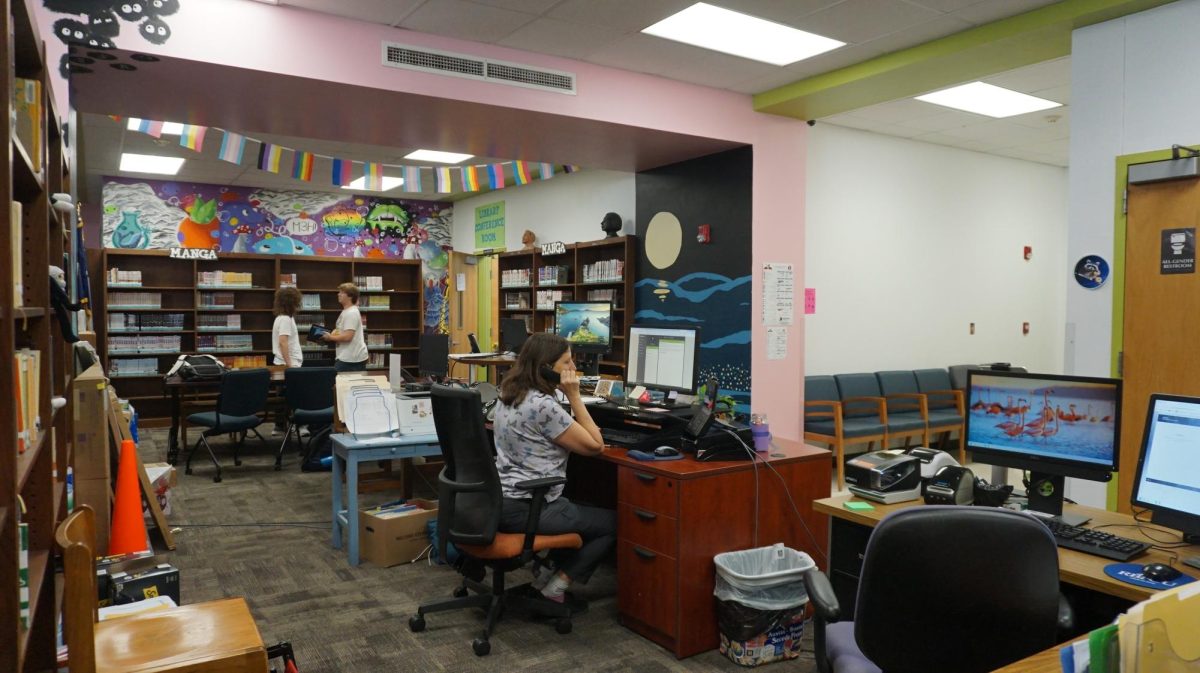At age 17, Valerie Paton graduated from high school in December of her senior year with a nearly perfect ACT score. Many driven students like her had set their sights on schools like Harvard and Yale, but she instead chose to attend a community college.
“It was a perfect place for me to go,” said Paton, a first-generation college student. “I was young, I needed to stay at home for a little while, I was in a great community, didn’t have a tremendous need to leave immediately, and I wasn’t totally certain about what my pathway would be, school degree or otherwise. So it was just a good personal fit for me as well as [a good] academic fit.”
From her junior college, she transferred to a four-year college, eventually earning her Ph. D from the University of Southern California. She cites herself as “living testimony” to the successful pathway from junior colleges to traditional four-year colleges. According to the nonpartisan Public Policy Institute of California, 40 percent of students at state community colleges transfer to four-year colleges.
Paton is now a professor at Texas Tech’s College of Education and senior vice provost of the El Paso campus. One of her areas of expertise is how community colleges function in the overall world of higher education.
“The community college [system] is actually fairly unique across the world, and there’s people from all over the world that come and look at the community college system in the United States,” Paton said. “[It] grants the opportunity for all students to attend and to earn an associate’s degree, they can earn a workforce degree, [and] there are three community colleges in the state of Texas where you can actually earn a bachelor’s.”
Information graphic by Sophie Ryland. Sources: The Texas Association of Community Colleges, The College Board, The Georgetown University Public Policy Institute
Texas is one of 19 states in which junior colleges can offer four-year degrees. About 90 junior colleges across the country are now offering baccalaureate programs, where students can earn their bachelor’s instead of associate’s degrees.
Community colleges additionally offer some academic benefits, including smaller class sizes and professors who are focused only on teaching, having no research requirements.
“Community colleges are community-based, community-funded and community-governed, so all very local to your community,” Paton said.
“A Texas community college is 50 percent [the cost] of a Texas public university, so if you can do 60 credit hours in the first two years at the community college, certainly there’s a financial advantage, but I would argue as a community college that there’s a very rich academic culture of small class environments, faculty who have a very singular focus on teaching and a smaller learning environment, and that may be a really good fit for some students.”
Senior Kristal Lopez said that she is choosing to start at Austin Community College in order to explore different opportunities in a lower-pressure, lower-cost setting before she decides upon a life path.
“After applying to many universities in Texas and getting my acceptance letters, I realized I couldn’t choose a school, not because it was a ‘tough decision’ but because I couldn’t choose a school when I wasn’t sure of what I wanted to study,” she said. “Because I have not found my passion, I decided it would be best to start at ACC and take my basics. I’m hoping to find my passion along the way, so that I am ready to transfer to the perfect university for me.”
Many community colleges now also offer dual credit, a program where high schoolers can earn both high school and college credit through their local junior college.
“Both my girls started dual credit when they were sophomores in high school; they both graduated with more than 30 credit hours,” Paton said. “Community colleges are built to be … a flexible entry point for the community for higher ed, so you’ll see them be quite adaptive probably in a way that most universities are not because that’s in fact their mission: to be focused on the local community and responsive to community needs.”
The increased flexibility of community colleges make them ideal for less traditional students, such as veterans, those experiencing food insecurity or homelessness or those returning to or enrolling for the first time in college as adults.
There’s also certainly a financial advantage to two-year-colleges. Austin Community College costs about $5,100 a year. In comparison, UT-Austin costs $20,184, and the average Texas private college costs $57,164.
According to The Boston Globe, public four-year universities’ tuition and fees are growing 19 times faster than the median family income.
Iman Javenmardi, a McCallum graduate, spent his first two years of college at ACC and is now debating whether to pursue his bachelor’s at Texas State University, where he has been accepted, or to remain at ACC, where he is majoring in graphic design. He says money was a large factor in his decision to begin his schooling at ACC.
“It saves money to start there first,” Javenmardi said. “It’s a great way to get my feet wet and see what I want to study. ACC classes are $250, and Texas State is up to $1,000 each. It doesn’t make sense to take those classes at Texas State when you can get those credits at ACC for much lower expenses.”
The Globe also reported that 59 percent of all community-college students come from households earning less than $65,000, while more than a third are the first in their family to attend college.
“I believe it’s important for people to experience ACC before they go to a university so they can be certain what they want to do with their life before they heavily invest on that path,” Javenmardi said. “There’s also nothing wrong with getting just an associate’s degree because in this world it’s all about skill. Time is a very precious and scarce resource; it’s best to start planning out as soon as possible.”
Vocational training is another important facet of two-year colleges. According to the Associated General Contractors of America, 70 percent of construction companies nationwide are having difficulties finding qualified workers. Furthermore, the U.S. Department of Education reported that there will be 68 percent more job openings in infrastructure-related fields in the next five years than people training to fill those position.
The Georgetown Center on Education and the Workforce found that jobs for associate’s degree holders have grown 46 percent since 1989. According to Current Population Survey data, a high school graduate with no post-secondary education earns an average weekly salary of $652, but when that individual earns an associate’s degree, that salary rises about 15 percent to $785 per week.
Critics of the community-college system point out that only a third of community college students graduate with a degree or certificate within six years. Community-college students, however, are far more likely to face personal obstacles that make it more difficult for them to complete their schooling. Because of this reality, more and more community colleges offer increased support such as personalized counseling, on-campus food pantries and subsidized day care.
Some drawbacks of attending a community college include fewer classes to choose from, a reduced sense of the traditional “college life” and fewer extracurricular offerings. Some experts also believe that lower-income, minority students are pushed more often to choose junior colleges and vocational-career paths than their wealthier, white peers.
States such as California and Oregon have signed programs into law that provide free tuition to students attending two-year colleges. Critics of the plan say they often attract middle-class students, giving aid disproportionately to students who need it less. In Oregon last school year, the majority of aid went to upper-income families.
A primary federal source for funding vocational education, Tech-Prep, hasn’t been funded since 2011, and 25 percent of states reduced their funding for career and technical education, according to the National Association of State Directors of Career Technical Education.
McCallum graduate Mary Teasdale, now at ACC at the Highland Mall campus, says that she didn’t have the best GPA in high school, but that going to a junior college was the perfect opportunity for her to get back on track.
“The students and faculty are so nice and helpful,” Teasdale said. “It really makes the stress and worry of college seem less daunting.”
Teasdale said that community college was right for her and recommends it without hesitation.
“I have experienced some stigma about being a student at ACC, from family members mostly,” she said. “They say that it isn’t a real institution or that it’s not worth the money. But it is real, and it is worth it.”







